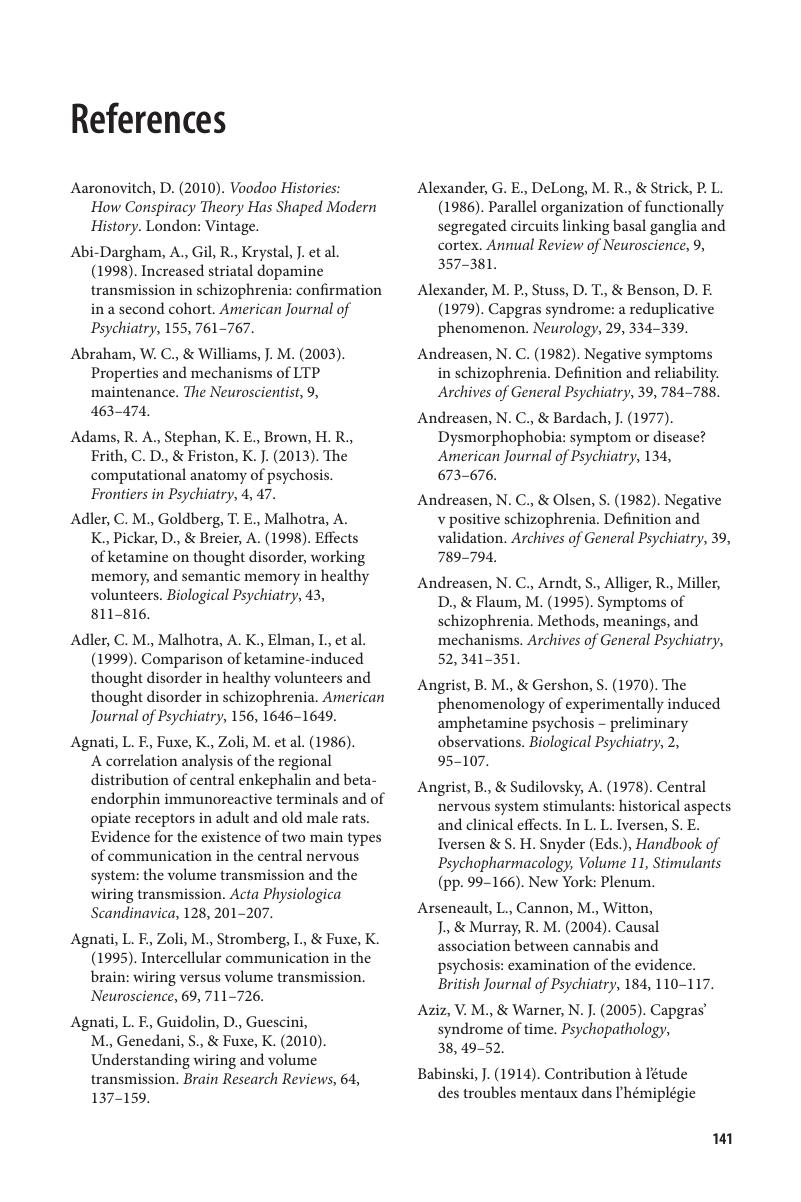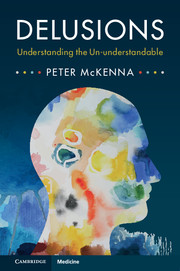Book contents
- Delusions
- Delusions
- Copyright page
- Dedication
- Contents
- Preface
- 1 What Is a Delusion?
- 2 When Is a Delusion Not a Delusion?
- 3 Delusional Disorder
- 4 The Pathology of Normal Belief
- 5 The Psychology of Delusions
- 6 The Neurochemical Connection
- 7 Delusion-like Phenomena in Neurological Disease
- 8 The Salience Theory of Delusions
- 9 What a Theory of Delusions Might Look Like
- References
- Index
- References
References
Published online by Cambridge University Press: 14 July 2017
- Delusions
- Delusions
- Copyright page
- Dedication
- Contents
- Preface
- 1 What Is a Delusion?
- 2 When Is a Delusion Not a Delusion?
- 3 Delusional Disorder
- 4 The Pathology of Normal Belief
- 5 The Psychology of Delusions
- 6 The Neurochemical Connection
- 7 Delusion-like Phenomena in Neurological Disease
- 8 The Salience Theory of Delusions
- 9 What a Theory of Delusions Might Look Like
- References
- Index
- References
Summary

Information
- Type
- Chapter
- Information
- DelusionsUnderstanding the Un-understandable, pp. 134 - 140Publisher: Cambridge University PressPrint publication year: 2017
